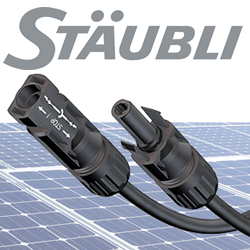Solar and farming go hand in hand
Solar Trade Association states that there is no need for choice between food production and solar farms
The Solar Trade Association will be writing to Environment Secretary Liz Truss today following her announcement that farmland should be used for ‘food and crops' and not solar farms [1]. The Department for Environment, Food and Rural Affairs (Defra) has announced that farmers will no longer be allowed to claim agricultural subsidies for land dedicated to solar, but has failed to consider how solar and farming can actually go hand in hand.
The Solar Trade Association will offer to take the Environment Secretary on a visit to one of the country's many solar farms that also have sheep grazing on the land in between the solar arrays.
Commenting on the announcement, Leonie Greene, Head of External Affairs at the Solar Trade Association said:
"It is damaging and incorrect for Defra to suggest that solar farms are in conflict with food production. The Government's own planning guidance makes clear that farming practices should continue on solar farms on greenfield land. The industry, working with the National Farmers Union, has been very careful to define good practice to ensure continued agricultural production. Indeed detailed guidance on this is being discussed by the All Party Group for Beef and Lamb in the House of Commons today.
"The land is still available for farming – the solar fixings only take up 5% of the land. This means plenty of room for continued agricultural practices such as sheep, geese or chicken farming. As far as farm payments are concerned, solar should really be treated in the same way as orchards or fields with trees, where animals continue to graze the land in between.
"Solar farms have an important role to play in conserving our countryside. Not only can solar power save huge amounts of greenhouse gases, but solar farms can provide protected spaces for boosting biodiversity, such as wildflowers and bees, as well as providing greater income stability for farmers who face increasing weather risk due to climate change. We urge Defra to champion best practice in the solar industry for the benefit of British farmers, our climate and our countryside."
The Government's own planning guidance on renewable energy from July 2013 [2] states that solar farms on greenfield land should allow for "continued agricultural use and/or encourage biodiversity improvements".
The Solar Trade Association defined good practice in solar farms nearly 18 months ago with its '10 Commitments' [3] which state that solar companies will focus on low quality or non-agricultural land, and avoid the best land that is generally used for growing crops. The commitments also state that developers will always look to combine their solar farms with food production and boost the biodiversity of the land.
Just last month the National Solar Centre, together with the National Farmers' Union and a number of leading solar developers, published new guidance [4] on how to combine solar farms with the grazing of sheep, the rearing of chickens or geese or indeed the growing of vegetables or other crops.
The document was formally launched [5] on a solar farm near Axminster in Devon which combines sheep and solar and is the subject of an event in the House of Commons later today.
Featured Product

​Stäubli Electrical Connectors
​Stäubli Electrical Connectors are used on more than 300 GW, over 50% of the PV capacity worldwide. The MC4 family of UL and TUV listed products include connectors, in-line fuses, branch connectors, cable assembly and more.
